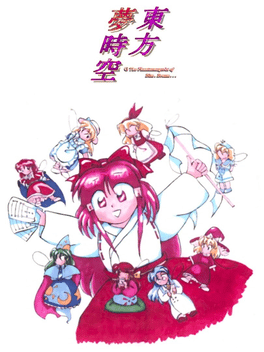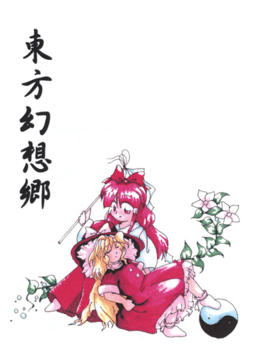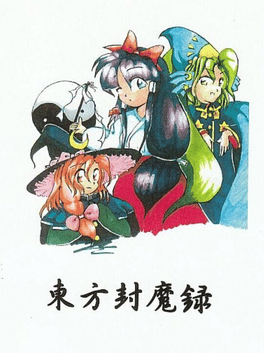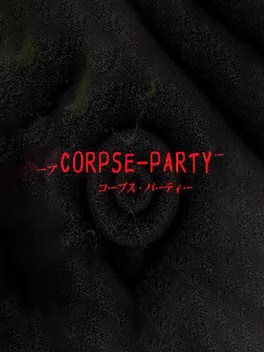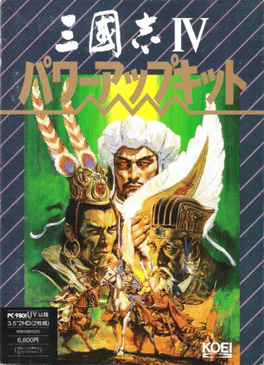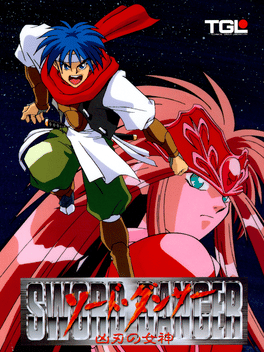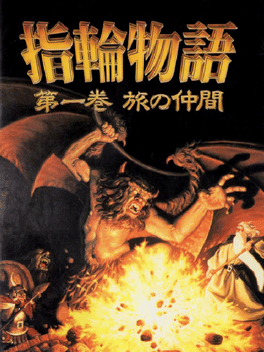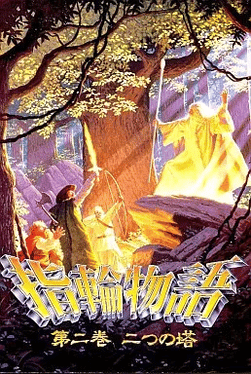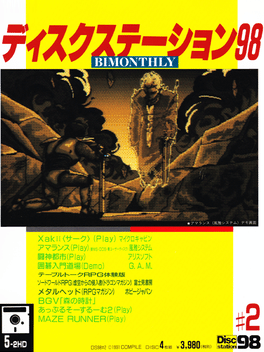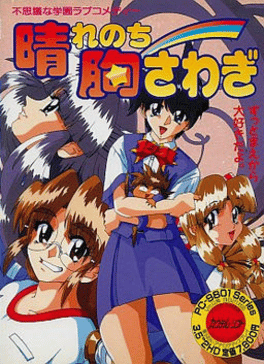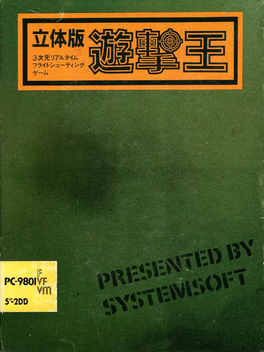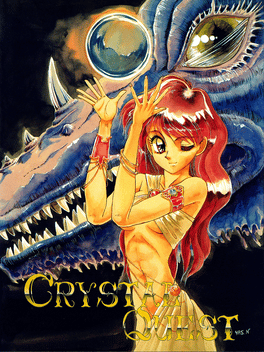Most Popular Pc 9800 Series Games
-
Touhou Rei'iden: The Highly Responsive to Prayers
1996
star 5The game introduces the Shrine Maiden Reimu Hakurei, who frantically attempts to persuade a bouncing Yin-Yang Orb to hit various on-screen targets, "cards" and "bosses" alike. Reimu can knock and maneuver the Yin-Yang orb around by whacking it with her gohei, slide-tackling it, and firing shots at it. Enemies will be trying to hinder your progress by firing at you, but you can cancel out their shots with your own, or even deflect them by swinging your gohei. Only the Yin-Yang orb can damage the enemies, however, so simply firing your shots at enemies will have no effect. As a last resort, Reimu can use a "bomb", once per life, to hit all cards on the screen. There is no guarantee that any given card will be hit, and will often fail to damage a boss. The game consists of several stages of increasing difficulty, with a boss fight occurring every five stages. To complete a stage, the player should clear all cards or defeat the boss. Reimu will lose a life whenever she is hit by an enemy projectile or the yin-yang orb -
Touhou Yumejikuu: Phantasmagoria of Dim. Dream
1997
star 6.8This game is a vertical danmaku shooting game, where two characters engage in danmaku gameplay within individual and separate play areas (aka. split-screen). Upon meeting certain conditions, players are able to unleash a variety of character-specific Spell Attacks upon their opponents in an attempt to whittle down their remaining health points. In Story Mode, the player will face nine opponents, each more capable than the previous. Phantasmagoria of Dim.Dream also features a Match Play Mode where the player may face off against AI opponents or compete against other players, as well as watch AI vs. AI matches. -
Touhou Gensoukyou: Lotus Land Story
1998
star 7.9This game features two playable characters to choose from, with two different attack types each. Reimu Hakurei can pepper a wide area of the screen with weaker attacks, while Marisa Kirisame relies on her power to compensate for her narrower attack spread. The bombs also exhibit unique behavior and damage amounts depending upon the character chosen. Lotus Land Story is the first game in the Touhou Project to feature bombs that auto-collect items, graze counting, the ability to move more slowly by holding the shift key, and a non-trivial scoring system that involves the collection of special dream items that boost the player's ultimate scoring potential. The game's scoring system also marks the series' first instance of score bonuses for the elimination of bullets following the defeat of mid-bosses and bosses. -
Touhou Kaikidan: Mystic Square
1998
star 7.9Mystic Square allows the player to select from among four unique protagonists, each hailing from one of the 2 prior danmaku shooting games in the series. Series mainstays Reimu Hakurei and Marisa Kirisame are joined by former enemies Mima and Yuuka Kazami for a journey reaching to the depths of the Makai. Mystic Square also marks the first appearance of Alice Margatroid as an opponent, who later stages a comeback in Perfect Cherry Blossom. Although limited by the PC-98 hardware, Mystic Square is the most refined of the PC-98 Touhou titles, and features gameplay quite similar to Windows Touhou games. It employs a variant of Lotus Land Story's Dream Bonus system, rewarding the player for taking risks (i.e. collecting point items from the top of the field area). Its rank system, however, is more lenient than Lotus Land Story's. -
Touhou Fuumaroku: The Story of Eastern Wonderland
1997
star 6.9The Story of Eastern Wonderland casts the player as the Shrine Maiden Reimu Hakurei and offers three distinct attack types to choose from: a wide-range type with weak attack power, a mid-range type with moderate attack power and auto-targeting capabilities, and a narrow-range type with high attack power but lowered movement speed. The bombs also exhibit unique behavior depending on the type chosen. As the first danmaku shooting game in the Touhou Project, the Story of Eastern Wonderland introduces many features that are now hallmarks of the series as a whole: relatively small hit boxes, boss characters who are not much larger than the player character however are highly mobile, a power-up system, variable-worth point items, an unlockable Extra Stage, and a semi-complex scoring system. The game also marks the first appearance of Marisa Kirisame, who would become a major character in the series, appearing as often as Reimu Hakurei herself. -
Corpse-Party
1996
Corpse-Party
1996
star 7.6A group of friends unknowingly perform an occult ritual that traps them in an otherworldly elementary school. Here, the vengeful spirits of young children threaten their lives and their sanity, and the only hope of survival is to uncover the chilling details behind the murders of those trapped before them... -
Progenitor
1994
Progenitor
1994
Progenitor is a space adventure/strategy game. You play as Kenny, a space pirate searching for his long-lost father. There are over a dozen explorable planets where you can buy and sell goods and perform tasks. Demand for goods (and their prices) change based on the characteristics of the planet you're on. -
Early Kingdom
1992
Early Kingdom
1992
Early Kingdom is an Action RPG, developed by Kure Software Koubou (KSK) for the PC-98 and released in Japan in 1992. -
Sword Dancer: Kyoujin no Megami
1994
Goddess of the Evil Blade is a direct sequel to the first Sword Dancer. The story continues to chronicle the adventures of the "sword dancer" Hien and his mentor, the warrior Tetsuta. They have succeeded in rescuing the "white dragon sorceress" Setsuna from the clutches of the demons. However, greater challenges await the three. Setsuna's life might be in danger, and the watchful eye of the evil Black Dragon continues to follow the heroes. The adherents of the benevolent White Dragon have to prepare for the decisive battle against the forces of evil... The game plays very similarly to its predecessor. The overall structure corresponds to that of a traditional Japanese RPG: the player navigates the heroes through top-down environments, buying supplies in town, advancing the narrative in a linear way, and fighting enemies to gain experience and level up automatically. Like in the first game, the battles are action sequences that take place in small side-scrolling areas, similarly to fighting games. However, unlike i -
Meltylancer: The Melting Pot Police
1995
MeltyLancer is a life simulation game similar to -- and by the same designers as -- Graduation, in which the player is tasked with training a squad of six young Tokyo Eastern Metro Police recruits, called Lancers. The main core of the game is determining each Lancer's weekly schedule: which days are they on patrol, which days on standby, and which days do they have off? After the general schedule is determined, the player meets with each Lancer to speak with them directly, determining specific actions they'll take that week; whether they spend a day training, exercising, or getting some much-needed rest will affect their stats and ability to complete missions. While on patrol or on special missions, battles may occur, which can be partially controlled with a handful of commands but mostly play out automatically. Each of the six Lancers has their own abilities, personalities, and specialties. A mini-CD containing the game's theme song is also included in the package. -
Yubiwa Monogatari: Dai-ikkan - Tabi no Nakama
1991
The PC-98 port features different graphics and sound. -
Yubiwa Monogatari: Dai-ni-kan - Futatsu no Tou
1993
PC-98 port features different graphics and sound. -
Disc Station 98 #2
1991
Disc Station 98 #2
1991
This edition also includes Toushin Toshi (+18) and a demo for Gokichi-kun Series: Igo Nyuumon Doujou. -
Travel Junction
1996
Travel Junction
1996
Hero fails to find a job in a major tour company. Eventually, he gets a job in a very small tour company on the verge of bankruptcy only containing four people with him. Their last hope is barely known southern island that no big tourist company holds. Hero and company president's daughter go there as guides alongside a tourist group of six women. -
Hare Nochi Munasawagi
1995
The story of Harenochi Munasawagi does not start in a very original way: the protagonist is a high-school boy named Kazuhiko, who is - surprise! - permanently horny, displaying his "affections" at any given opportunity to anyone young and female, including even his childhood friend Chihiro. But while the focus on the story is on Kazuhiko and his quest for physical intimacy (which often results in girls getting angry and beating him up), there are other rather disturbing elements that come into play later - in particular, bunny-like demons who share Kazuhiko's passion for the opposite sex... -
Animahjong X
1994
Animahjong X
1994
The sequel to Animahjong V3. When the events of this game occur the playable protagonist in the first game is now close friends with the three mahjong playing sisters and has even begun dating the eldest, Yumika. In this story, Rumi is kidnapped while walking home from school one day and the player must search for the clues that will reunite the family. Playing the role of the male protagonist or either of Rumi's older sisters, Yumika and Miyabi, you compete against several female mahjong players who have information on Rumi's whereabouts. As they get closer to finding Rumi, Yumika grows increasingly suspicious... -
Crystal Quest
1992
Crystal Quest
1992
The puzzles include a tile-matching memory game and a timed top-down maze sprint (find the exit before the time runs out). In each subsequent area, the difficulty of these puzzles increases, and the amount of clothes the demi-humans wear after a puzzle has been solved decreases.

